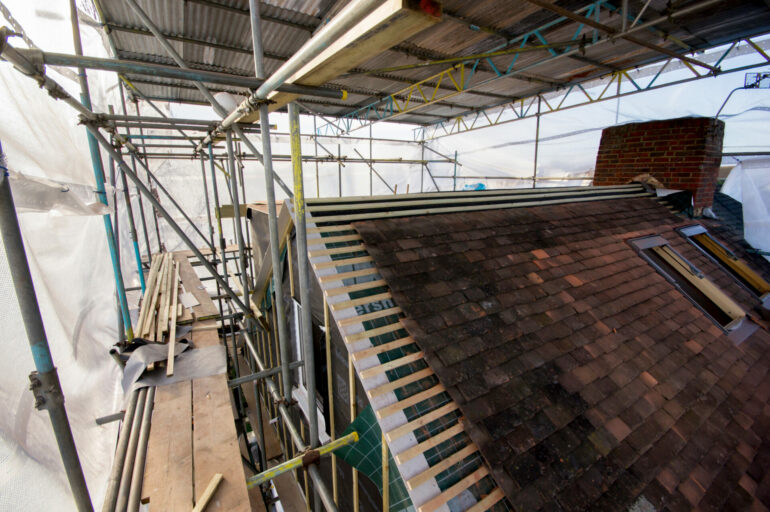Property refurbishment is growing in popularity for investors who want to maximise their returns by enhancing both the capital value and rental potential of a property. Refurbishments cover a broad range of projects, from cosmetic upgrades to substantial structural alterations and even changes in property usage.
Typically, where the renovations do not need planning permission or building regulations, a project would be considered to be a light refurbishment whereas more complex, involved renovations are classed as heavy refurbishment.
Heavy refurbishment projects generally include structural alterations that require planning permission or building regulations. Common examples might include barn conversions, dividing a single-dwelling into multiple dwellings like a House of Multiple Occupation (HMO) or a multi-unit freehold block (MUFB), or converting several dwellings into one larger residence.
A heavy refurbishment could also include converting a property from commercial to residential, using permitted development rights (PDR), which provide automatic grants of planning permission for certain building works and changes of use to be carried out on a property without having to make a full planning application.
When it comes to financing property refurbishment, bridging can be used to fund both the purchase and any of the work that is required.
Obviously, where the works are complex and involved such as converting a barn to a family home or an office block into a MUFB, the build time for the project is likely to be extended over a long period, with payments to contractors spread throughout the construction.
In these instances, borrowing the whole amount required to complete the build at the outset can leave the borrower incurring unnecessary expense, as they are left paying the balance for the entire loan for a long period before they need to deploy the funds.
At Castle Trust Bank, we saw there was appetite from investors undertaking heavy refurbishment projects to reduce their overall cost of borrowing by only drawing down the funds as and when they needed them.
In response to this, we launched a Heavy Refurbishments with Drawdowns product that enables borrowers to only pay interest on the balance of the loan they have drawn down, with the remaining facility available to draw down at a later date. This means investors are not wasting money by holding borrowed money but can instead stagger their borrowing for when they have costs to fund.
Heavy refurbishments can often provide investors with an excellent opportunity to get the most out of a property investment, particularly if they can make use of PDR to deliver much-needed housing in areas of high demand. Of course, it’s still important that they manage their costs carefully and brokers can help their clients to structure the right funding solution that enables investors to fund their heavy refurbishment project as efficiently as possible.
Anna Lewis is commercial director at Castle Trust Bank



